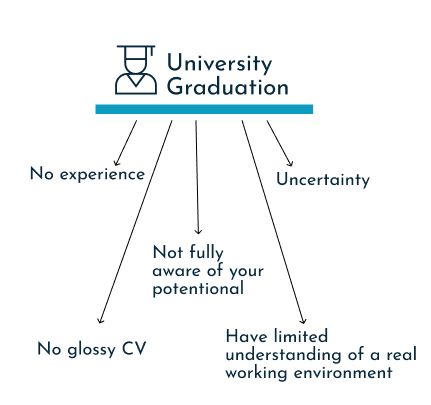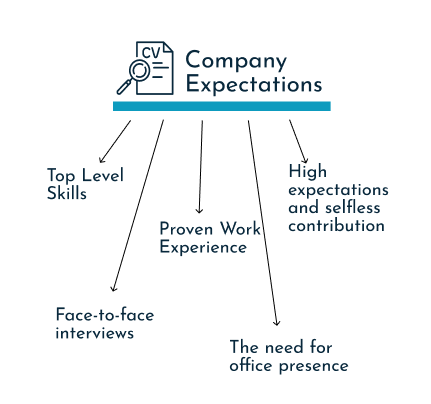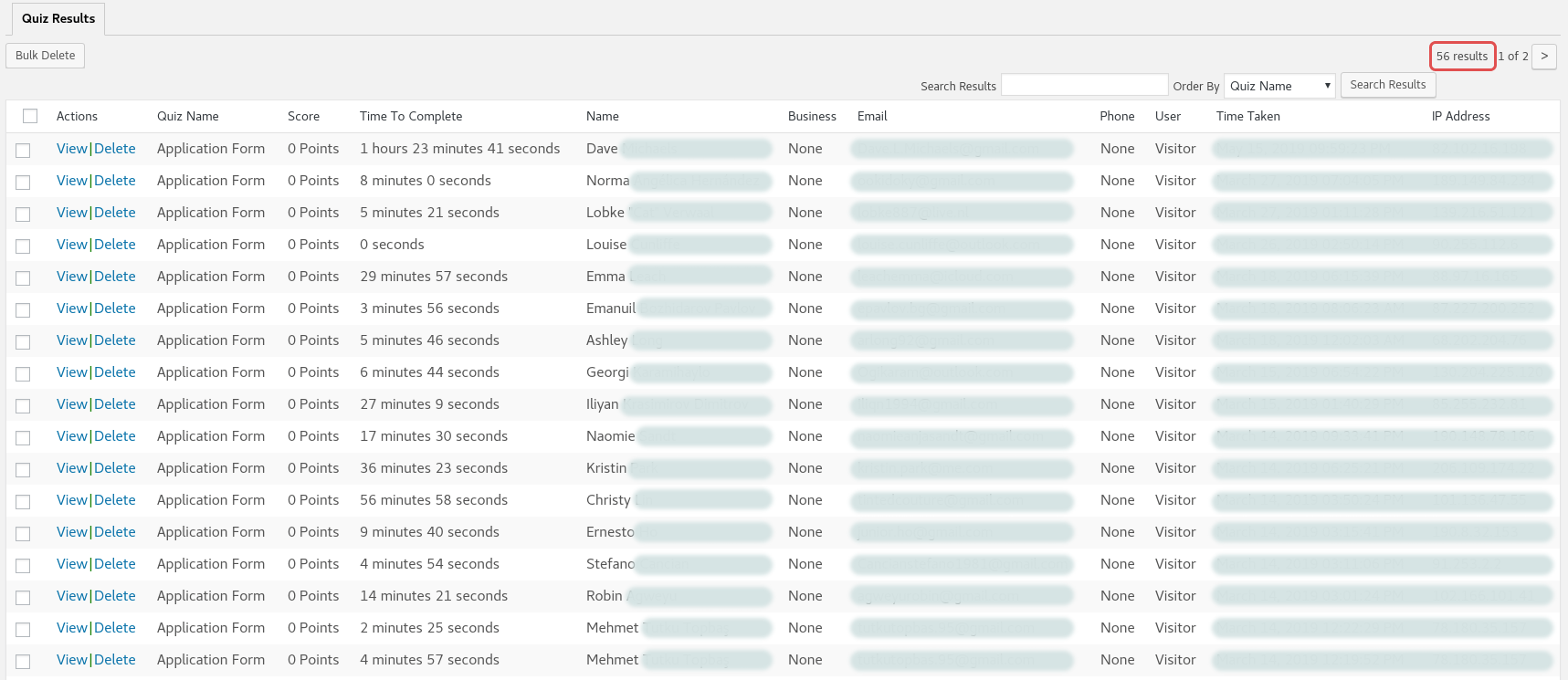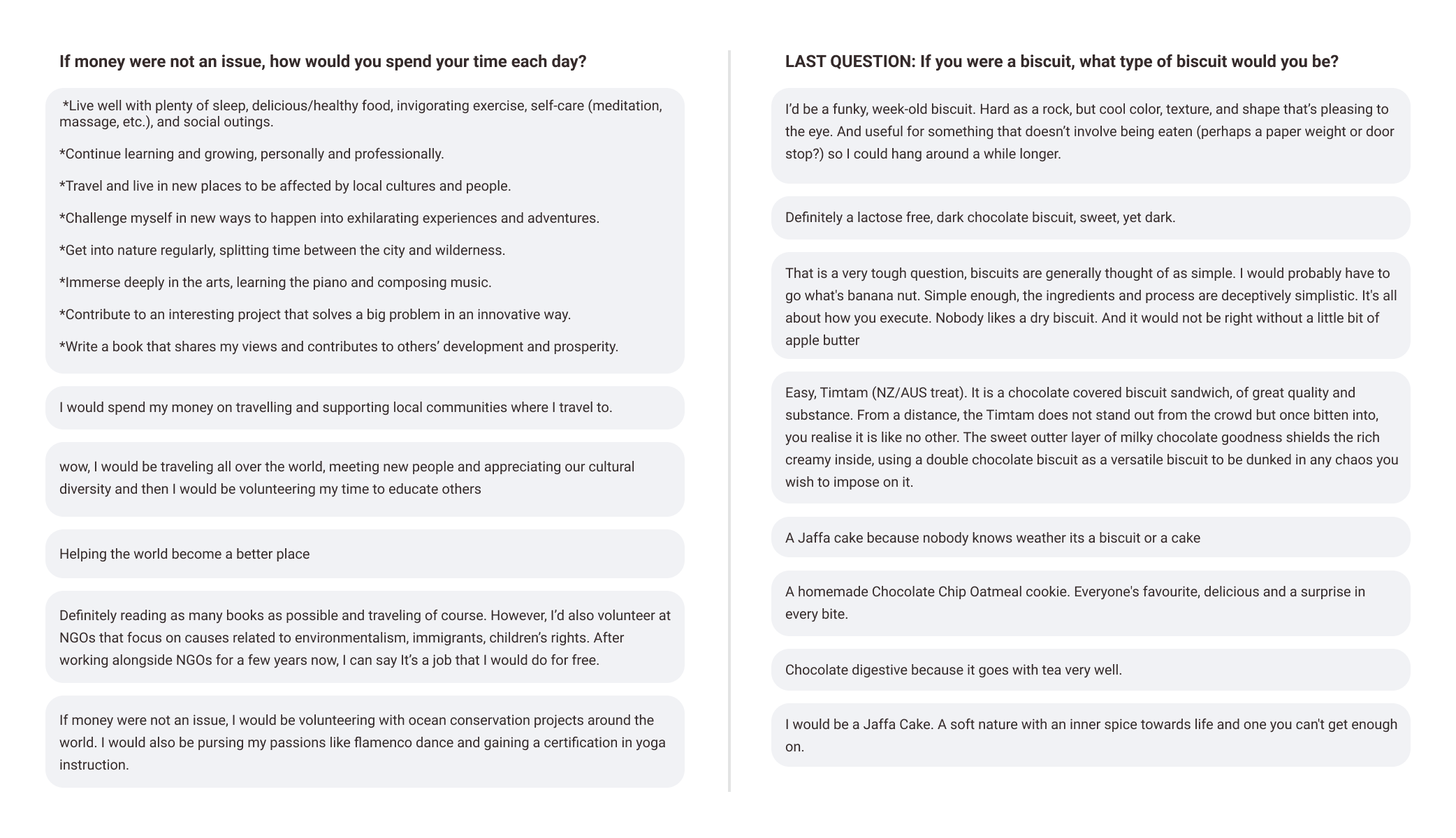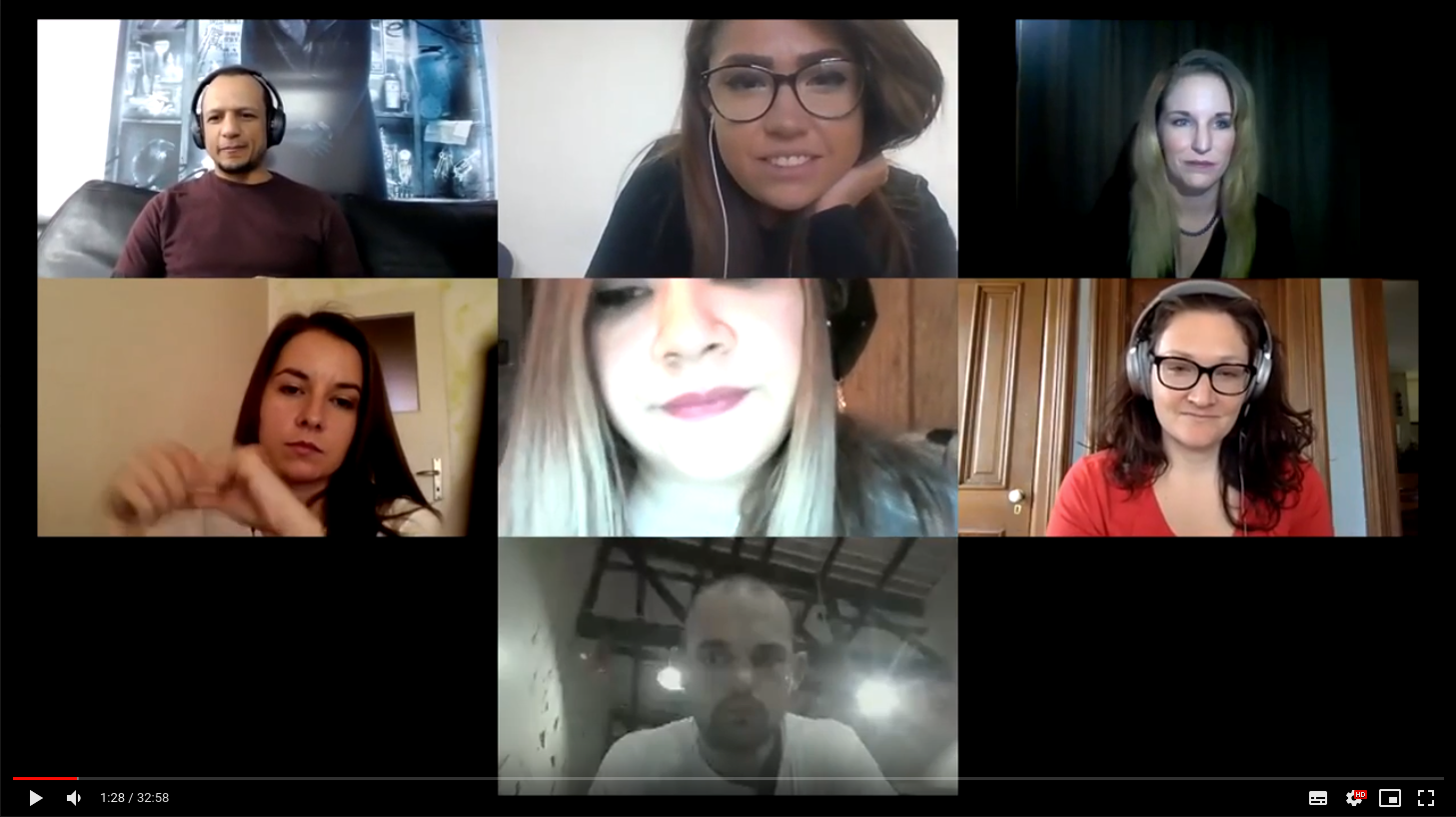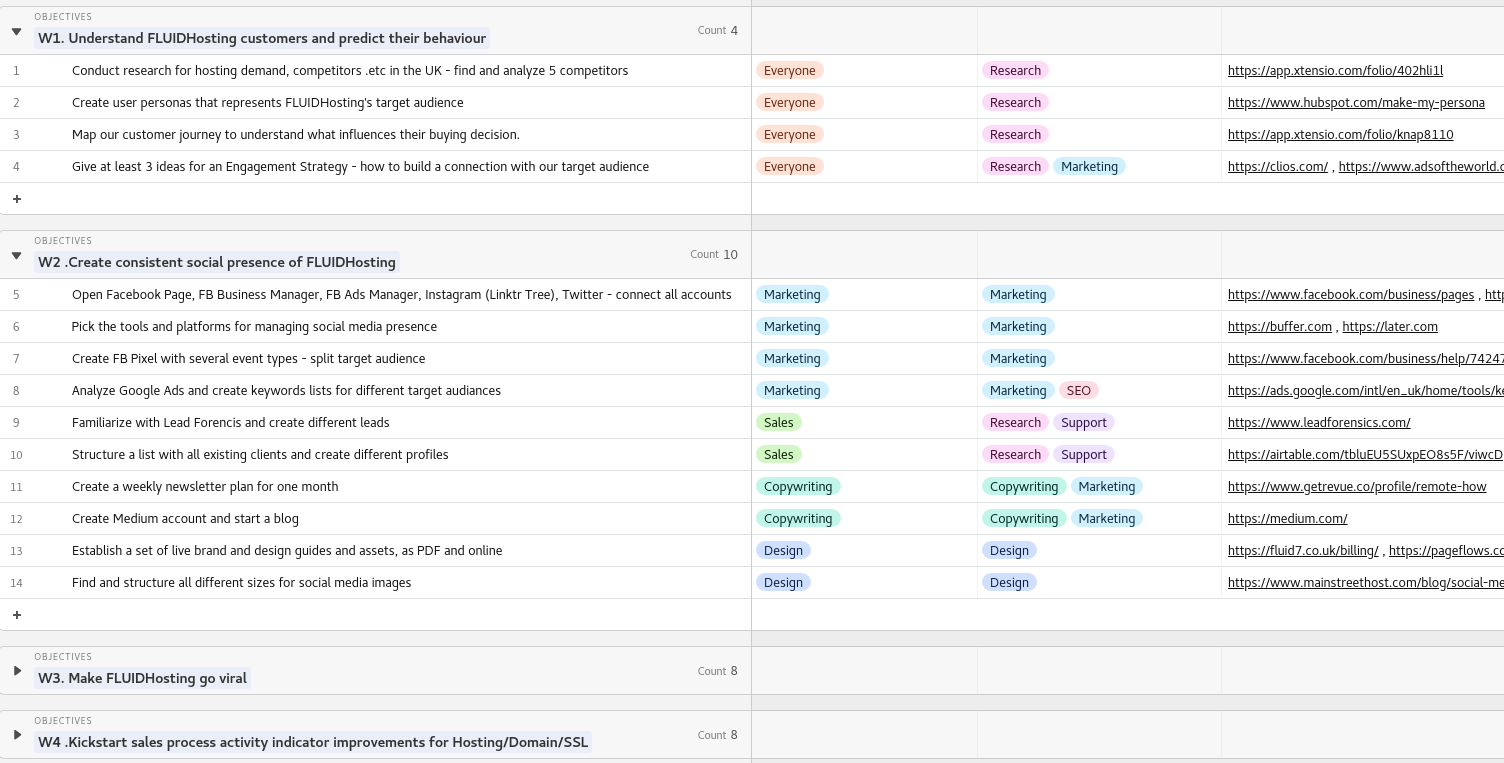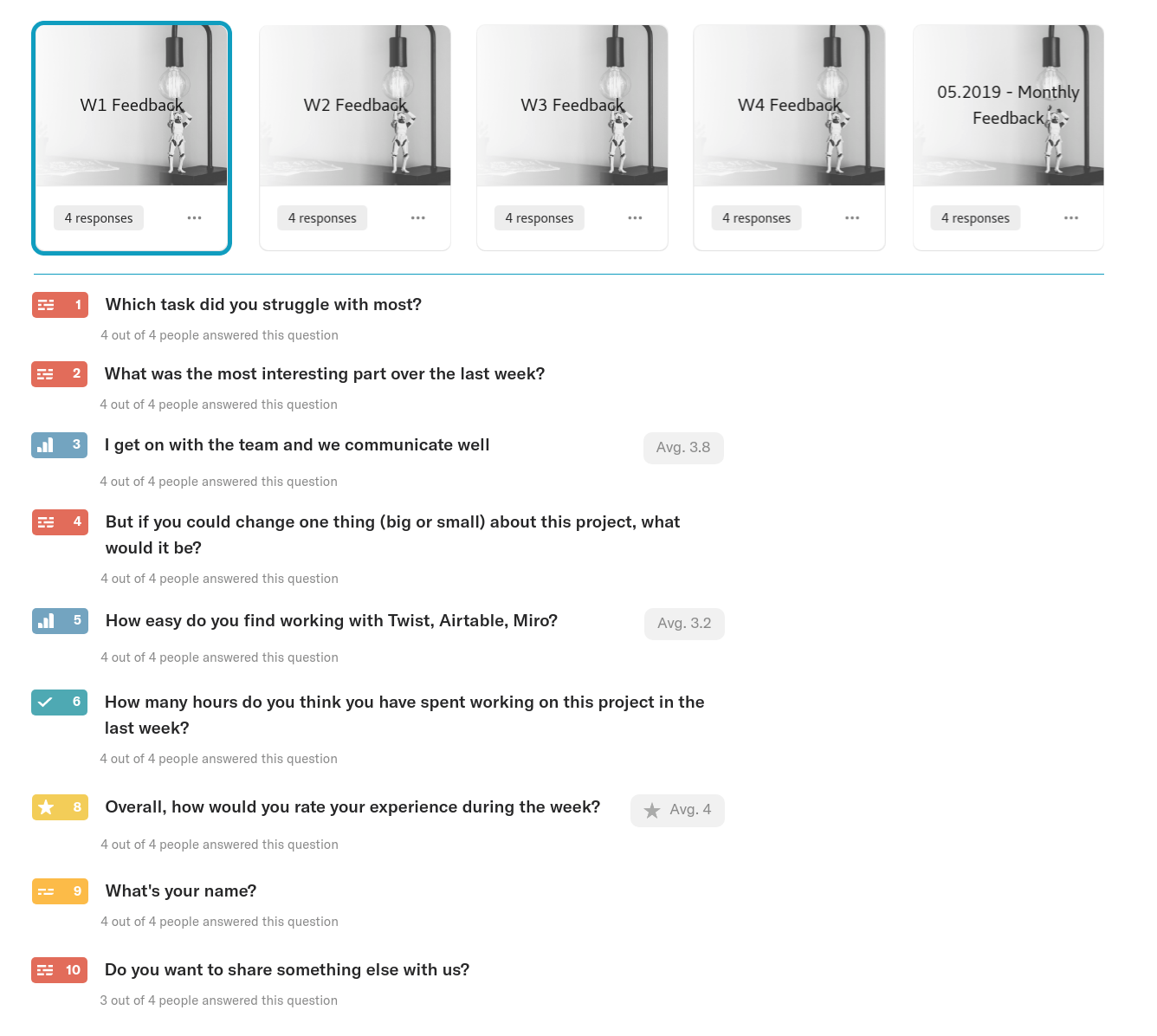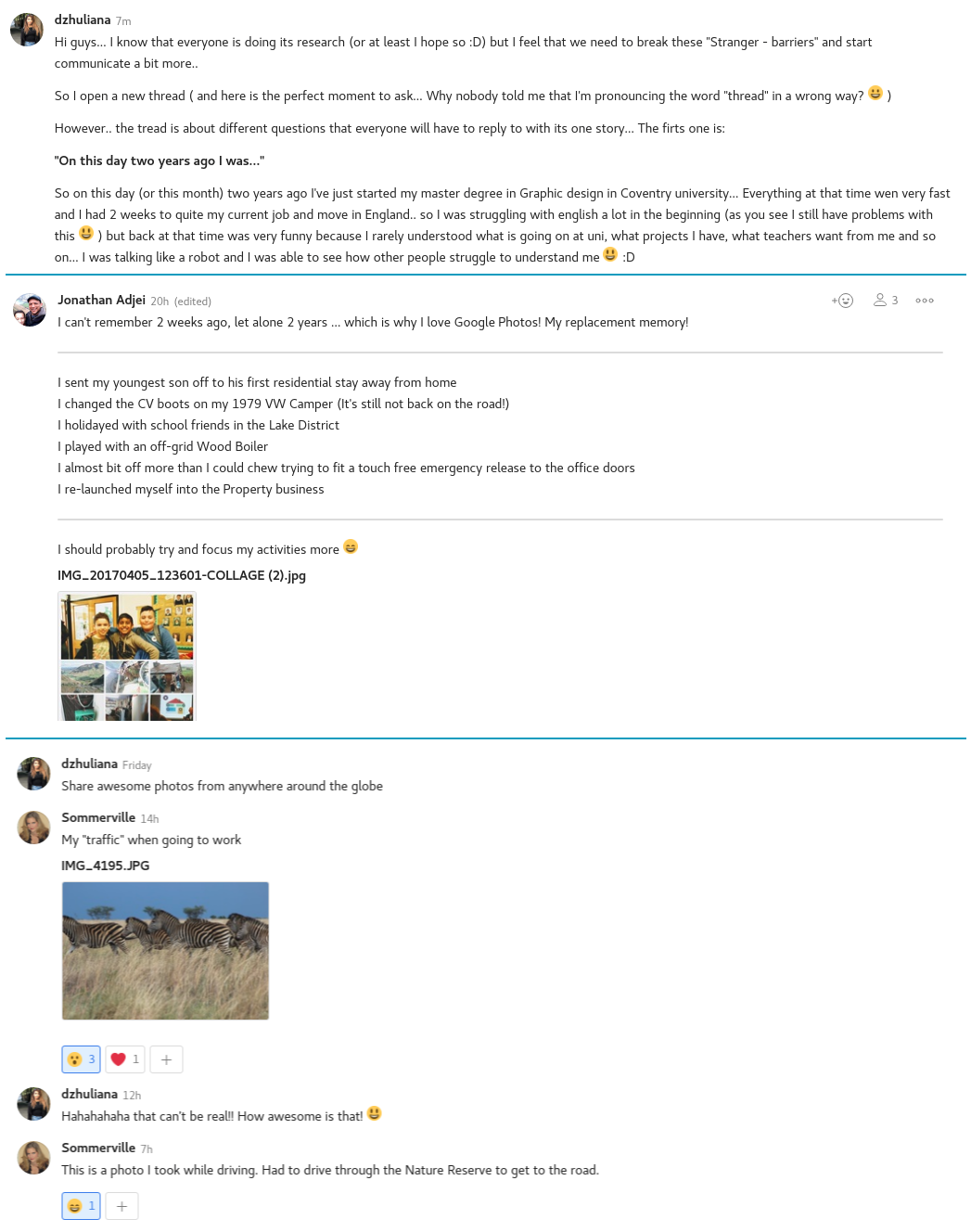‘The Experience’ is a YC startup project for growing remote teams and creating a cohesive team culture where people with little or no experience become volunteers and help startups scale faster in exchange for real working experience.
The idea was born in our attempts to grow our web development company and to push our creativity to the max. We had to find a solution for how to build a team without investing any money and to only rely on our ambitious minds and eagerness to expand our business.
MISSION AND BELIEFS
Our mission is to inspire more companies to grow remote teams that will help them to leverage their ideas. We also encourage these business owners to show their teams the positive impact of AI on society.
How will THE EXPERIENCE boost your business?
The remote team:
- Don’t have to quit their current job leading to a smooth transition to their new position.
- Will be able to try something new and confirm that they enjoy it before fully committing and transitioning into a more permanent team member.
- Will avoid the stress of moving to a different city, leaving their families, getting to know their new environment, etc.
- Will get familiar with remote working and remote learning which leads to better focus and higher productivity levels.
- Will commit to the team, grow as a family and be paid for their results.
- Don’t have to apply using their CVs or prove anything on paper -- only demonstrate a burning desire to learn.
- Will learn how to use and implement AI into a business.
The business owner:
- Will focus on its ideas and strategies on how to accelerate the growth of the company.
- Will learn to grow very rapidly while managing a remote team and developing a healthy working environment.
- Will build a diverse team with people from different cultures with different perspectives and fresh ideas, because working remotely doesn’t have any location limitations.
- Will save a lot of money using KROW Strategy - money that could be invested in developing the idea instead.
- Will boost productivity and creativity in the company.
- Will avoid repetitive work that takes a lot of time, and by implementing AI into your work, you can focus on the creative part.
THE CHALLENGE
As a web development company, we were mostly working directly with clients on different projects and were struggling to find enough time for marketing. We have always been geeky developers, and none of us were trying to do anything to take our company to the next level…except our CEO.
Like every small business owner, he had been trying to do everything by himself – management, sales, development, marketing, research, etc. and yes – he is a very capable and skilled person, but that’s not the right approach to leverage a business.
You need people to support you and to help you with all the tasks on your agenda, people who will do every task much better than you. It’s impossible to succeed alone – you need to surround yourself with passionate people and trigger the creativity that will lift you higher.
If you want to see different results from your company, you need to change something in your current strategy.
As a startup, we had been facing a lot of problems and had entertained a lot of fears, mostly related to our resources and income. We knew that we needed more people to help us, but we didn’t have the resources to hire them.
However, we believe that having a desire and passion for something is the most powerful engine, so we decided to find people who wanted to try something new with their life. We researched that and found that
85% of people don’t feel satisfaction from their current job and would try something new if they had a chance.
We decided to give them a chance and provide them with real work experience.
As people who work on their computers 99% of the time, we believe that allowing remote work gives us a better opportunity to attract more people from different cultures and to diversify our team. We didn’t want to limit ourselves to local people but to find someone outside of our “bubble”… people who will expand our thinking.
We also believe that a healthy working environment boosts a person’s creativity and productivity, so we decided to give a lot of freedom to our new team members. We don’t believe in the “9 to 5” approach, and this was supported by research showing that the average office worker spends a considerable amount of time procrastinating during their work day. Less than three hours each day is spent working productively!
This made us think that it doesn’t matter if you are physically at work, because your mind could be soewhere else. We also had to ensure that these people would provide us with some results as well as get paid for their efforts. We came up with a solution based on Objectives and Key Results – an approach adopted by Google’s management team that we restructured for our needs.
We developed KROW – Key Results for Objectives Weekly – this approach is about setting up weekly goals and paying our new team members for accomplishing these goals.
The payment strategy we used for this project is called ROWE – Results Only Work Environment – a human resource management strategy co-created by Jody Thompson and Cali Ressler wherein employees are paid for results (output) rather than the number of hours worked.
Using this strategy, our remote workers were able to find their most productive time to do their work as well as optimise and organise their tasks.We strongly support the very popular statement, “Work smart, not hard,” so if a person is able to accomplish their Weekly Goals in a single day, that is totally awesome.
This approach is very effective, as everyone can schedule their own time in advance and prepare their work for the next couple of weeks which gives everyone else on the team a better understanding of what is going on and the ability to plan accordingly.
Companies complain of a “skills gap”, but graduates face an “experience gap”
We realised that universities cannot prepare students for collaborating with real clients, and it cannot put students in real work situations. We think that internships are very helpful but still cannot offer a full working experience, whereas working remotely on real projects will help a person manage their own work, be organised, find their own strengths and weaknesses and grow much faster.
We realised that universities cannot prepare students for collaborating with real clients, and it cannot put students in real work situations. We think that internships are very helpful but still cannot offer a full working experience, whereas working remotely on real projects will help a person manage their own program, be organised, find their own strengths and weaknesses and grow much faster.
THE STRATEGY
| Step 1
The first step of our project was to find passionate people who were looking for new opportunities. We ran an ad – a fancy infographic on all social media channels that went to a landing page showing the roles we needed to fill, the benefits of working remotely and the healthy working environment we offer. As a rule of thumb for this project, we didn’t want to spend any money, so we made a point not to pay for advertising.
The plan was to start discussions with many different groups on Facebook, Linkedin and Twitter and involve as many people as we could. We posted our infographic for 2 – 3 days around lunchtime – our research showed that as the most active time on social media. There were different reactions to our project, and many people didn’t like the idea of working for free for 30 days. This was our filter for finding people who valued experience more than anything else.
The landing page we released explained our project in detail, and our CTA /Call-To-Action/ was an application form for the positions we were offering. The first mistake we made was the form we created – 15 open questions that took around 30-40min to answer.
The results were pretty obvious – nobody on social media has the time to focus on answering in-depth questions, because these are places where people absorb a lot of information in a very short period of time. Only four people had the patience to fill in the form. Then we decided to reduce the number and tweak the type of questions. This worked very successfully – in only two days, we had more than 50 applicants!
| Step 2
The second step was to create a spreadsheet with all the candidates and to define the most important skill that we were looking for. We didn’t ask for a CV, because we believe that everyone has the potential to become very good at something that might not be directly related to their past education and experience.
| Step 3
The next step was to book virtual meetings with all the candidates we thought would be a good fit for our team. This step was quite fun, because we had candidates from all around the world and from totally different cultures.
The meetings weren’t the usual boring, stressful interviews as most people imagine. We had days when we met people for a morning coffee in California, a lunch break before surfing in Copacabana or having dinner in South Africa. Walking on the street in Bangkok or just a nice talk with an amazing woman working as a cybersecurity guard in New Zealand.
The most important part of these meetings was to figure out how willing these people were to learn, what they would sacrifice as they were triggered by a desire to develop a better version of themselves, and what makes them happy.
This part of the project was really funny and we enjoyed it a lot…
| Step 4
After finding our people, we sent emails to all candidates to inform them about our decisions and to invite the accepted candidates to an introductory meeting. We presented our strategy called KROW (Key Results for Objectives Weekly) to everybody and set a monthly plan.
As a distributed team operating in different time zones, we decided to have one weekly meeting and one monthly meeting. The weekly meeting requires everybody on the team to be online at the same time—no video or call involved in order to update the rest of the team about what they have been doing throughout the week, and what they have planned for the next week. The monthly meetings are video conference calls to keep everyone on the same page.
KROW
Objectives and Key Results is a popular management strategy for goal setting within organisations. The purpose of OKRs is to connect companies, teams, and personal goals to measurable results while having all team members and leaders work together in one, unified direction.
Originally implemented in 1970s by Intel President Andy Grove, OKRs spread across many companies, especially when they were introduced to Google by John Doerr. Now, OKRs are used by tens of thousands of companies from SMEs to Fortune 500. Google, LinkedIn, Intel, Zynga, Sears, Oracle and Twitter are just a few of the well-known OKR users.
The system does a really good job with many teams, but we were running a distributed team. Making new recruits feel a sense of connection to the company and amongst themselves is much more difficult than with typical employees. While the majority of OKR usage is quarterly, some companies will also set annual or monthly OKRs.
To satisfy our needs, we developed KROW – Key Results for Objectives Weekly that helped our team members by having a structured plan for every week and not wasting their time in micromanagement. We simply pick a goal for each week and then assign tasks to every person. The marketing positions we offered were Digital Marketing, Web Designer, Copywriter and Sales, so we created a list with related tasks. We wanted to ease their workload, so we provided them with the most useful resources available to help them complete their weekly tasks.
Weekly Objectives and Key Results
CULTURE OF FEEDBACK
Effective and timely feedback is a critical component of a successful performance management program and should be used in conjunction with setting performance goals. If effective feedback is given to employees on their progress towards their goals, employee performance will improve. People need to know in a timely manner how they’re doing, what’s working, and what’s not.
As a small company, we understand the importance of feedback and how critical it is for future growth. We asked everyone to be absolutely honest with us and share their thoughts about every decision we make.
Of course, not everything went smoothly in the beginning, because it is quite difficult to turn strangers into friends in just a week. In the first week, the silence in our group chat was killing us! Nobody wanted to share anything, and we thought that we were doing something wrong. We thought that these people weren’t enjoying the project, so we had to find a way to break the silence and bring them closer together.
We strongly believe that developing a healthy working environment is crucial if you want to have a strong team that will support you and share the success with you! We believe in building a deeper connection with every single person on the board, caring personally about everyone, understanding their problems and sharing their happy moments. The relationships that we build are much more than boss-employee… We spend ⅓ of our lives at work with our colleagues, and it is ridiculous to separate our personal life from our work.
THE REMOTE TEAM TODAY
Today, we are still working together, but now we face different problems such as what topic to choose each week, how to build leads each month, how to increase followers, how to improve our communication, and which tools we need to get rid of.
We have asked some of our people to share their Experience and how they were feeling about this project. Being objective and having the ability to look at all different angles is critical when building a Distributed Team!

